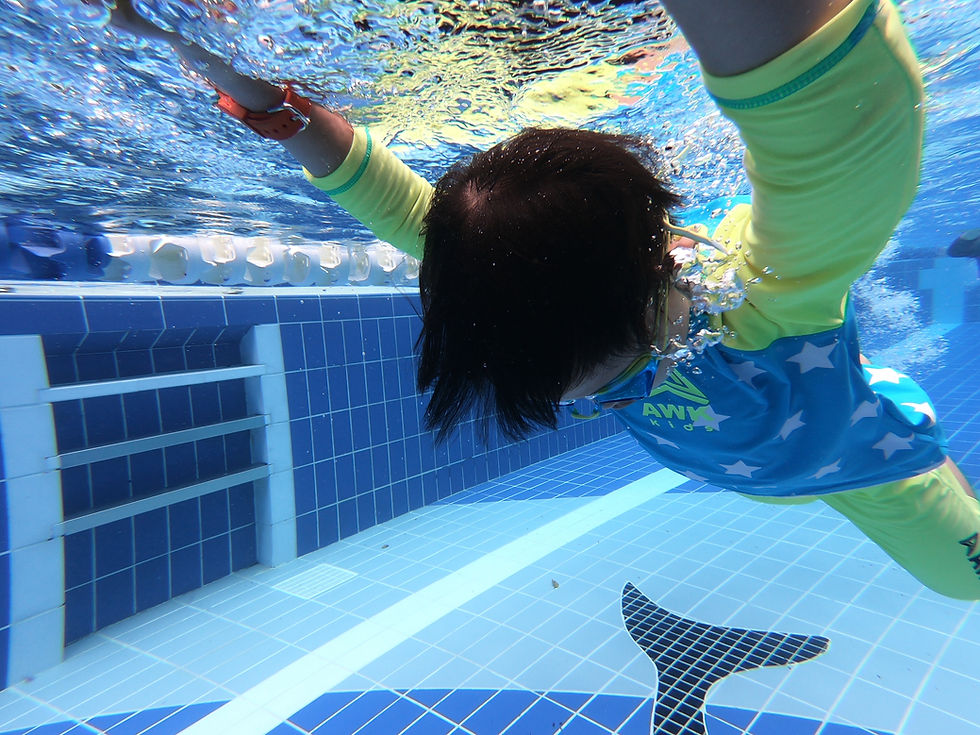Mastering the Front Crawl Breathing Pattern
- SG Sink Or Swim

- Sep 7
- 3 min read

The front crawl (also known as freestyle) is the fastest and most efficient stroke in swimming, but many beginners struggle with one crucial element: breathing. Poor breathing technique can disrupt rhythm, slow you down, and lead to fatigue. Mastering the breathing pattern is essential for building endurance, maintaining stroke efficiency, and swimming with confidence.
This article breaks down how to develop a smooth, efficient front crawl breathing pattern, with tips and drills you can start using right away.
🌊 Why Breathing in Front Crawl Is Challenging
Unlike on land, where breathing is automatic, swimming requires you to synchronize your breath with movement while keeping water out of your mouth and nose. The key challenges include:
Turning the head too far or too late
Holding the breath too long
Lifting the head instead of rotating with the body
Struggling to maintain rhythm under fatigue
✅ Solution: Learn proper timing, body rotation, and relaxed exhalation.
🏊 Key Principles of Front Crawl Breathing
Exhale UnderwaterDon’t wait until your mouth clears the surface. Blow bubbles continuously through your nose or mouth underwater, so you only need to inhale quickly when you turn your head.
Breathe to the Side, Not ForwardTurn your head just enough to get one eye and your mouth above water. Lifting your head forward causes hips to sink and disrupts body position.
Time with Body RotationBreathing should feel like a natural part of the stroke. Rotate your body with each pull, and let the head follow — not lead — the rotation.
Quick Inhale, Long ExhaleA short, sharp breath in; a calm, steady exhale out. This prevents CO₂ buildup and keeps your breathing rhythm consistent.
Choose a Breathing Pattern
Every 2 strokes: More oxygen, better for sprints.
Every 3 strokes (bilateral breathing): Promotes balance, great for distance swimming.
Mixed breathing: Alternate between 2 and 3 strokes depending on intensity.
🔑 Drills to Improve Breathing in Front Crawl
1. Side-Kicking Drill
Kick on your side with one arm extended and the other by your side.
Practice turning your head slightly to breathe while keeping one ear in the water.
Builds comfort with side breathing and rotation.
2. Bilateral Breathing Drill
Swim with a 3-stroke breathing pattern (breathing alternately left and right).
Improves symmetry and balance in your stroke.
3. Catch-Up Drill with Breathing
Perform front crawl but wait for one hand to "catch up" to the other before pulling.
Focus on breathing smoothly while maintaining alignment.
4. Exhalation Practice
Stand in shallow water, submerge your face, and practice blowing bubbles steadily.
Progress to swimming short distances with a relaxed underwater exhale.
5. Breathing Ladder
Swim 25 meters breathing every 2 strokes.
Next length: breathe every 3 strokes.
Then every 4 strokes.
Builds lung control and rhythm.
⚡ Tips for Success
Stay relaxed — tension makes it harder to coordinate breath and stroke.
Don’t overthink — focus on rhythm and flow.
Record yourself swimming or ask a coach to check your alignment.
Practice little and often — even 10 minutes of focused breathing drills per session makes a difference.
🏁 Conclusion
Mastering the front crawl breathing pattern is about timing, rotation, and rhythm. By practicing controlled exhalation, breathing to the side, and using specific drills, you’ll transform your stroke into a smooth, efficient, and confident technique.
Breathing should feel natural — not forced — once your body learns to sync it with the movement of the front crawl.





Comments